Terracotta Army has great ideas, but will it stand the test of time?
I am all for new ideas in board games — especially when they are designed and implemented to a high standard. In Terracotta Army, there are several good ideas including more than one that I’ve never seen before, but what I’m struggling to decide is whether or not they all work together to form a cohesive whole!
In Terracotta Army each player acts as an administrator in service of the Emperor — who just so happens to want an army to protect him in the afterlife. This is where the titular world wonder comes in, and the players will literally construct a small-scale replica of the Terracotta Army on the board, resulting in a wonderful table presence.
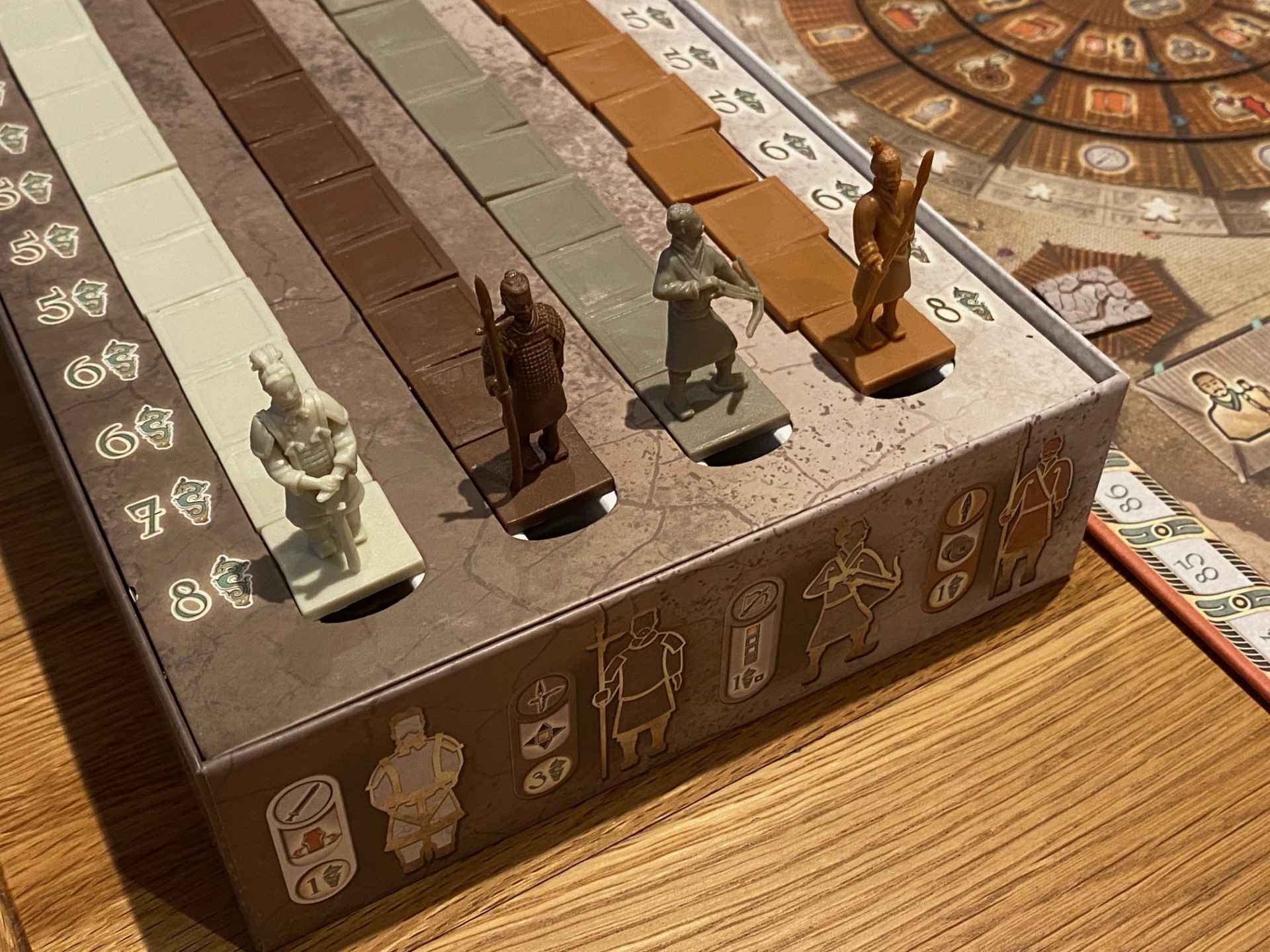
The army itself (which is made up of about 12 different sculpted miniatures) is fairly impressive, but the board in Terracotta Army is also unique. On the top left corner is the main worker placement area, represented here as a circle split into four quadrants and stacked (physically, in the form of separate cardboard rings). The reason the rings exist is because, on their turn, a player has the chance to rotate either the top or the middle ring – which can be massive, as I’ll explain shortly.
Each turn, a player simply takes a worker (either the small basic workers they begin the game with or a larger, upgraded craftsman worker) and places it in a space on the edge of the outermost ring. They may also pay two coins to rotate the two uppermost rings as mentioned, and then, they resolve the three actions (one on each ring) that align to their worker from the centre and work outwards.
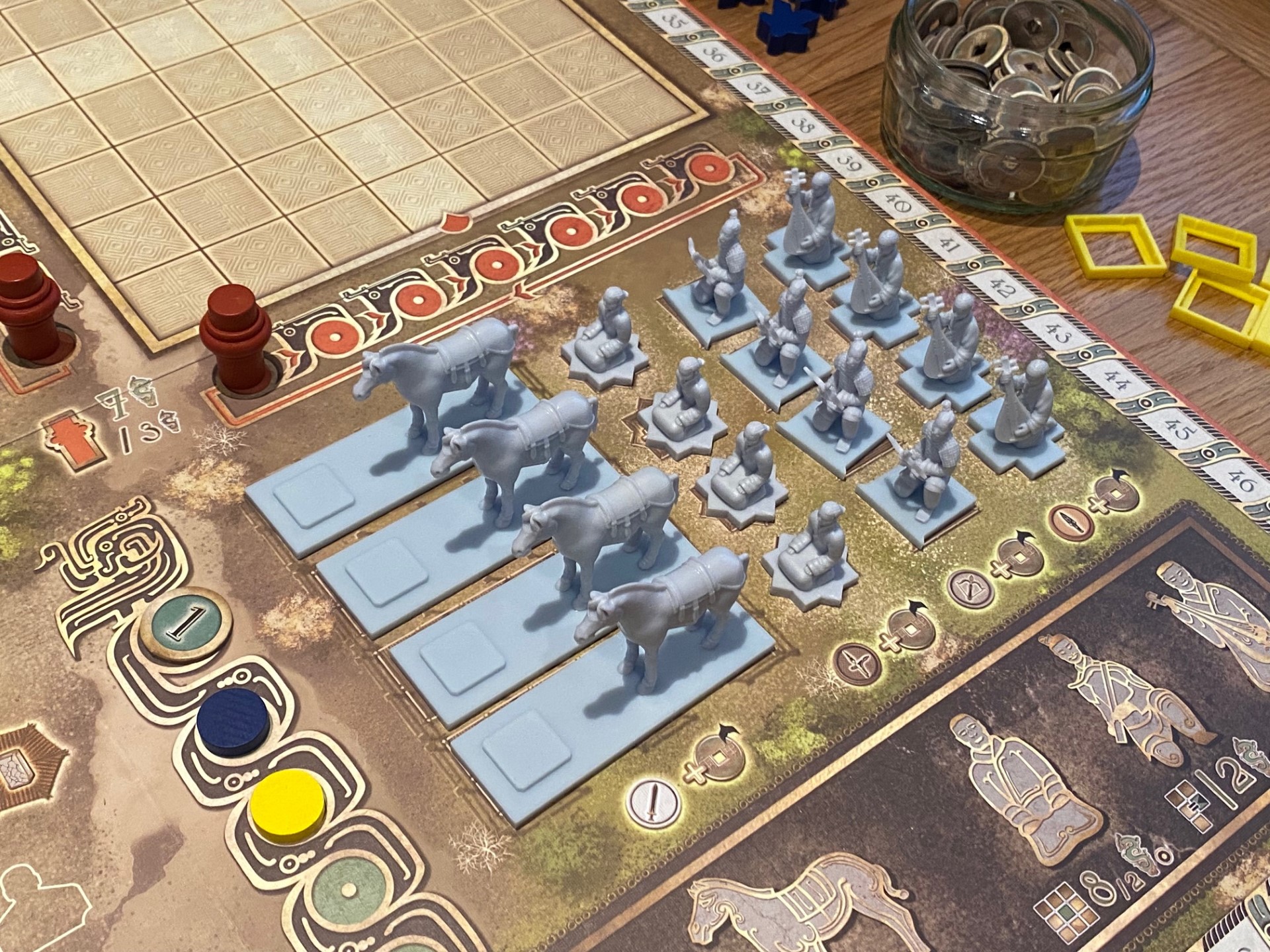
During the earlier rounds, there is little contention for space around the rings and so players will often find profitable placements without having to move the ring — actions include building a soldier, taking clay or money, upgrading a worker to a craftsman, taking an earlier place in the turn structure and learning from a master among others. Doing three good things represents a great turn, but as more workers are placed, it gets tougher to make quite such an impact.
This is where spinning the wheels come into play, with a player able to make just a small tweak to align one ring (per turn) to the next row of spaces, therefore making a better set of options for their current situation. If things look bleak, a player can also replace either the centre or middle ring actions by taking a clay or a coin — which isn’t powerful, but it’s better than nothing.
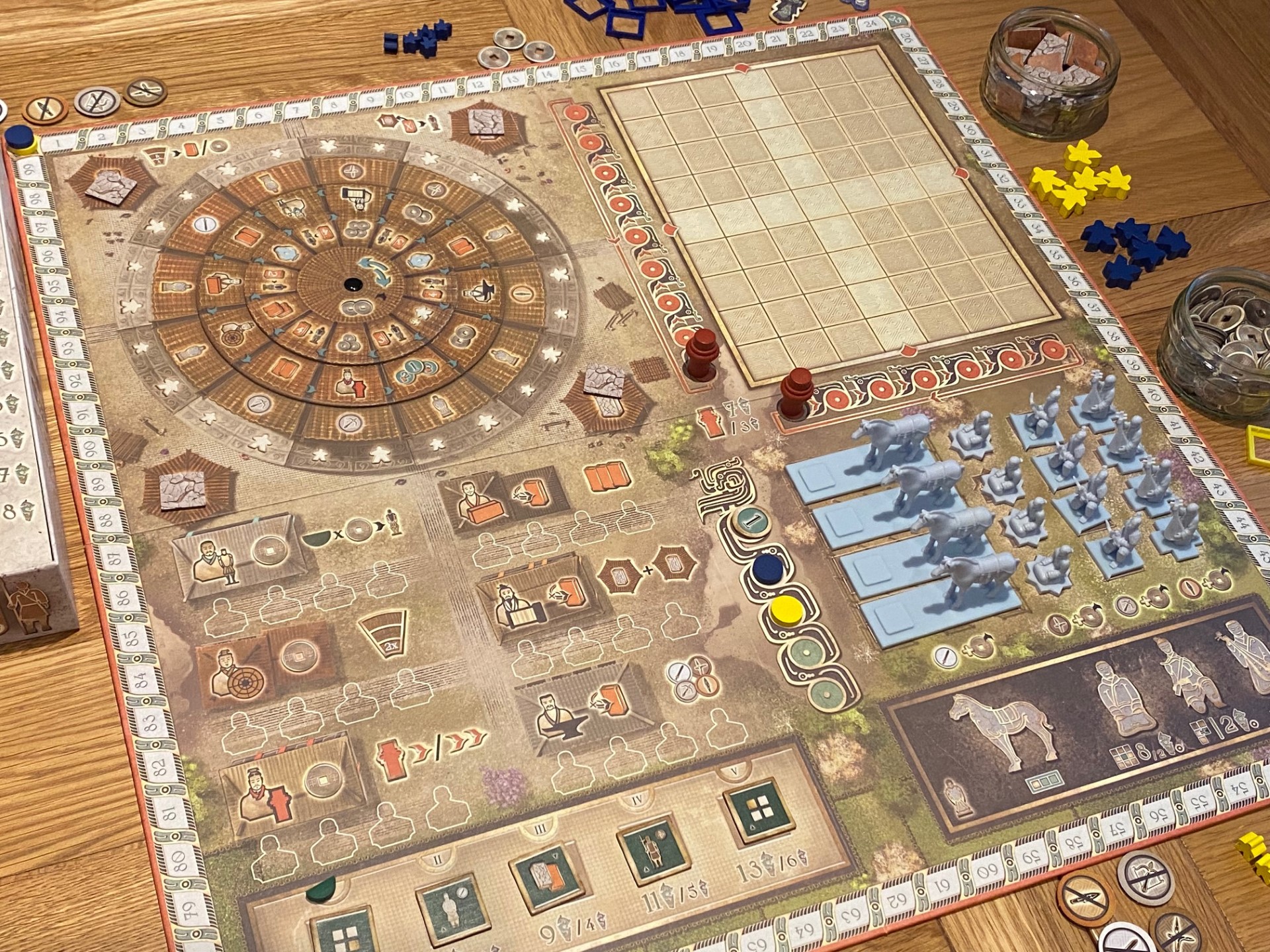
But what drives these actions? What are players doing? Well, without an overly laborious description, the aim of the game is to score points — and most of these will come from placing statues onto the grid printed on the top right of the board. Points will be scored immediately upon placement, then again when an inspection takes place, and then potentially at the end of a round when one of the randomised objectives is scored.
Scoring in Terracotta Army is complex, but as long as players go into the game knowing that placing statues will score, that should be enough to get the ball rolling. Round-end objectives include things like placing statues of a specific type (like guardsmen or crossbowmen) into specific quadrants, whilst inspection scoring comes from the location of two inspector pawns that move up and down the X and Y axis of the statue placement area.
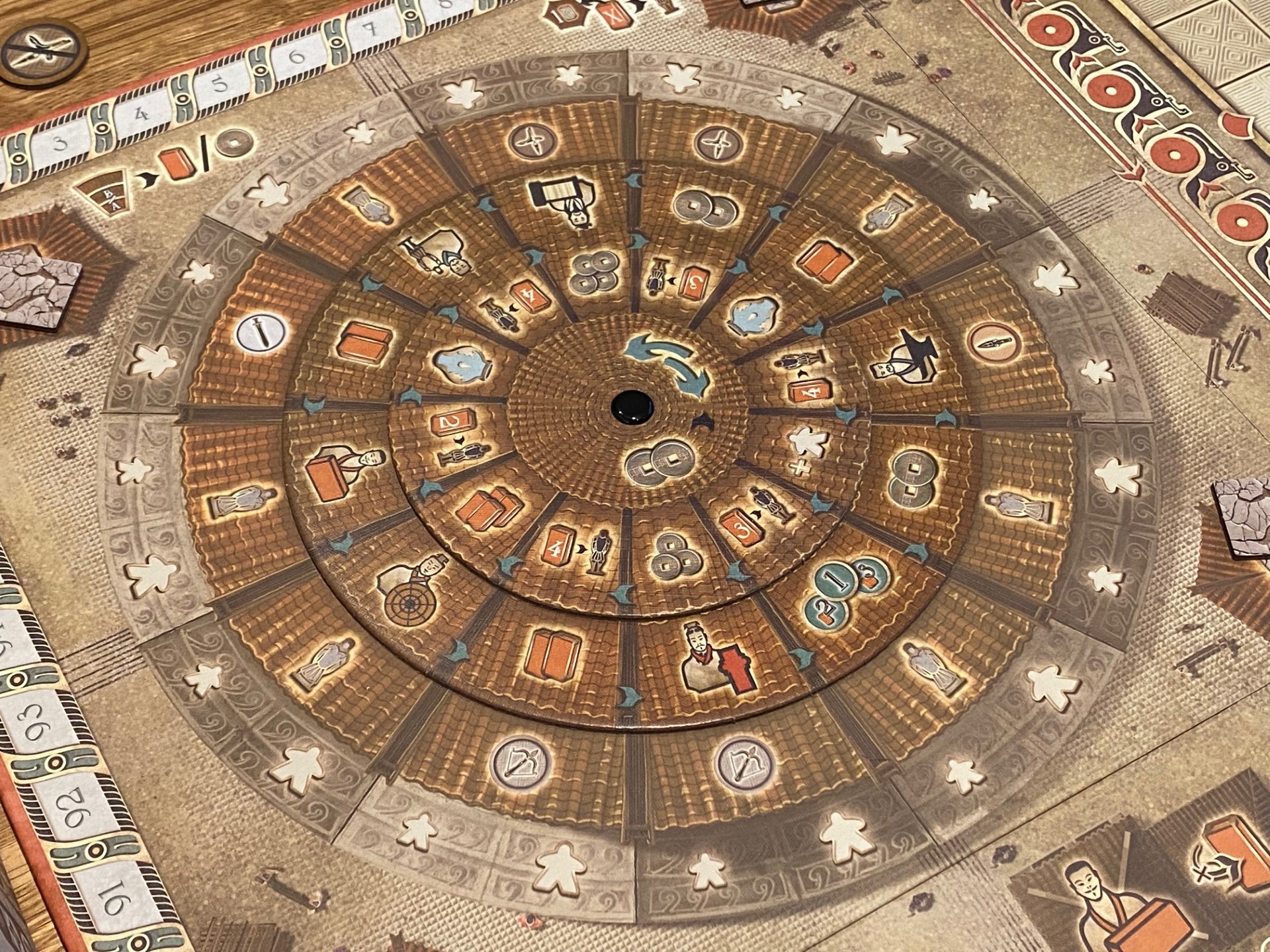
All basic statues (of which there are four kinds) will score when placed, with more points awarded the fewer of that statue type that has already been built, whilst specialist statues affect scoring in weird ways – mainly when inspections or end-of-round scoring take place. Games of Terracotta Army can result in pretty high scores, with single statues in the early game adding perhaps 7-10 points, and players getting up to double this during inspection scoring.
The relevance of actions on the scoring is that players can only build statues by spending wet clay to do so, and wet clay also comes from action spaces during the early game. In later rounds, having your apprentice tokens assigned to master craftsmen (also via action spaces) can result in wet clay and coins being added to your income each round — reducing the focus on those more basic action spaces as the game goes on.
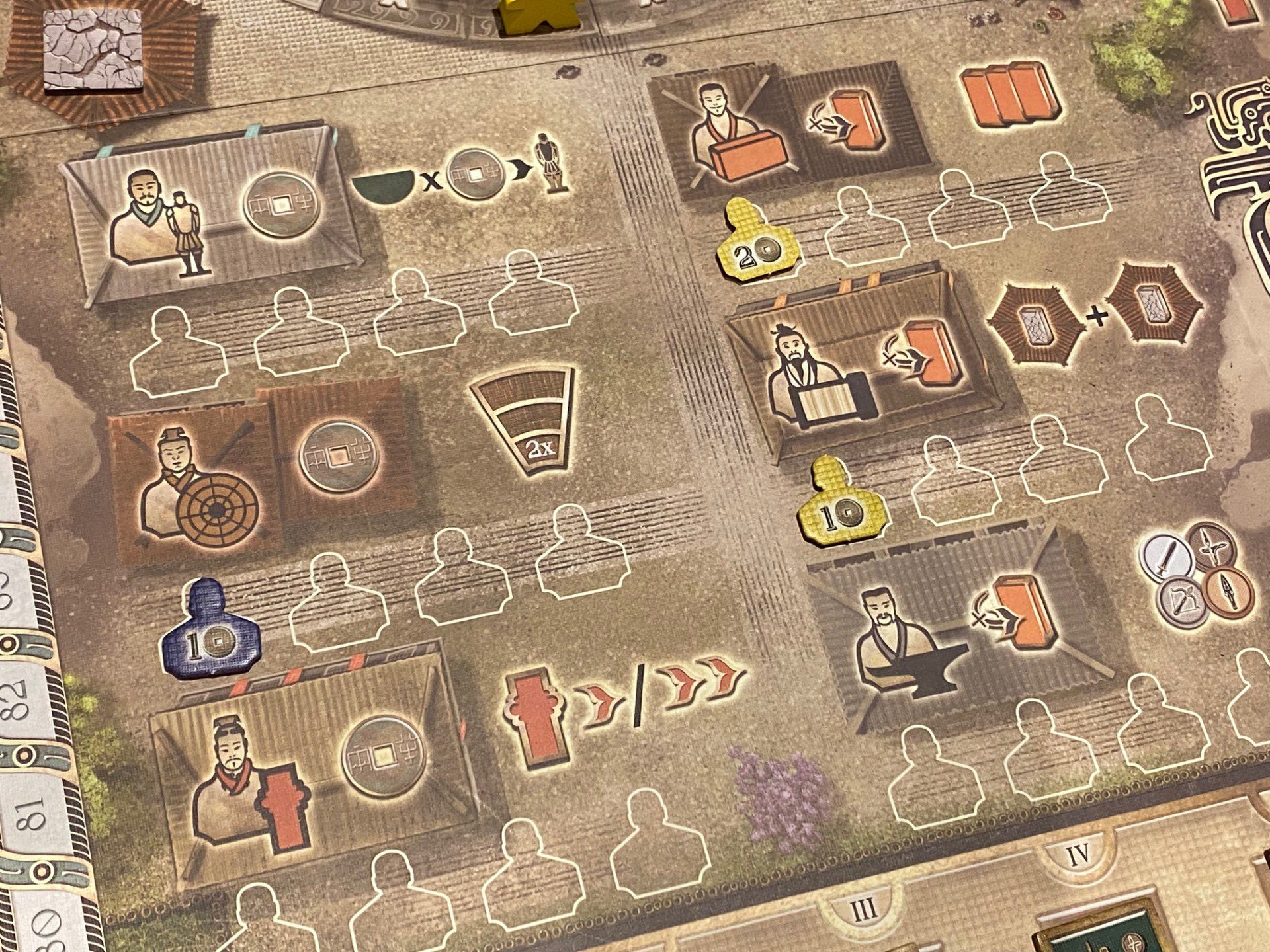
One thing I like about Terracotta Army is how much contention this creates at all times throughout. Early on, players might need to race to get clay and perhaps place some apprentices or upgrade workers, but later on, this will swing to focus on getting access to the cheapest statue placement spaces (two clay is best, four is worst). Simultaneously, there’s contention in the statue placement board because players get a big bonus for placing less-common statues, but later, there’s an area control puzzle where players have to consider the movement of the inspectors to score big points.
Unfortunately, there’s also a caveat to this enjoyment that means I much prefer Terracotta Army as a two-player game than at any other player count — so let me explain why. Each of these systems has a downside that introduces a little too much chaos at three or four players, whilst at exactly two, these same systems can be used to influence the moves of your opponent to great effect.
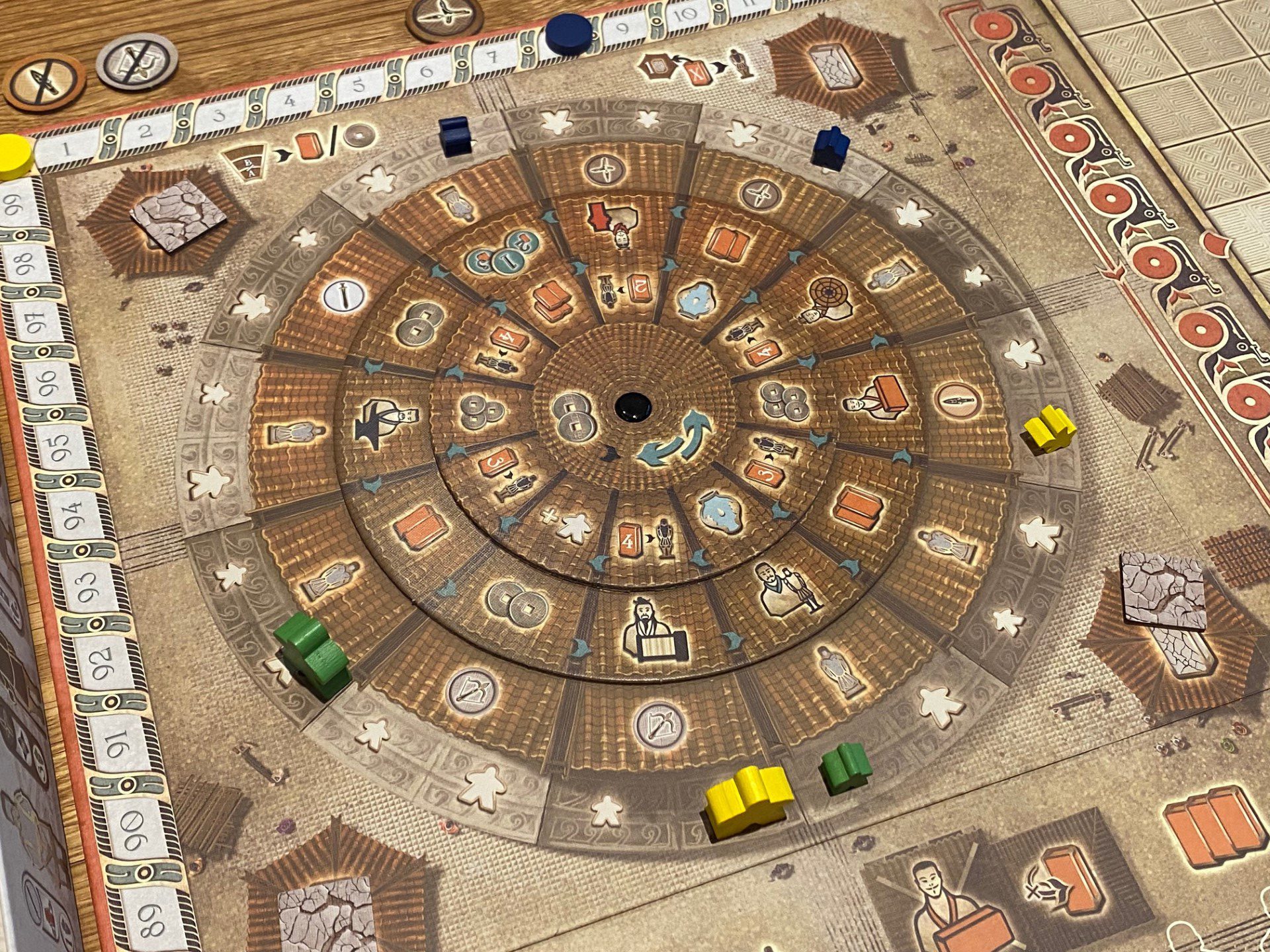
Where the action dials are concerned, it’s simply that ability to rotate the wheel(s). Money is not especially scarce in Terracotta Army and you’ll only really spend it to either place apprentices with masters or to rotate the dials. Whilst this is sort of a good thing when it’s your turn (because being able to rotate gives you options) it makes it nigh-on impossible to plan your turn in advance — and the more players, the more changes there will usually be. At two players, you know only one rotation is possible – albeit it could happen to either wheel — and a smart player can even use rotation to deny their opponent a resource or action space.
On the other side of the board where the statues are placed, it’s a similar story with the inspectors. Placing statues to line up with where you think the inspectors will be is more and more critical as the game goes on, yet because they are moved using action spaces, more players inevitably leads to move inspector movement. Again, with two players, you can flip this feeling of being “out of control” to the exact opposite — using the inspector movement as a real control mechanism.
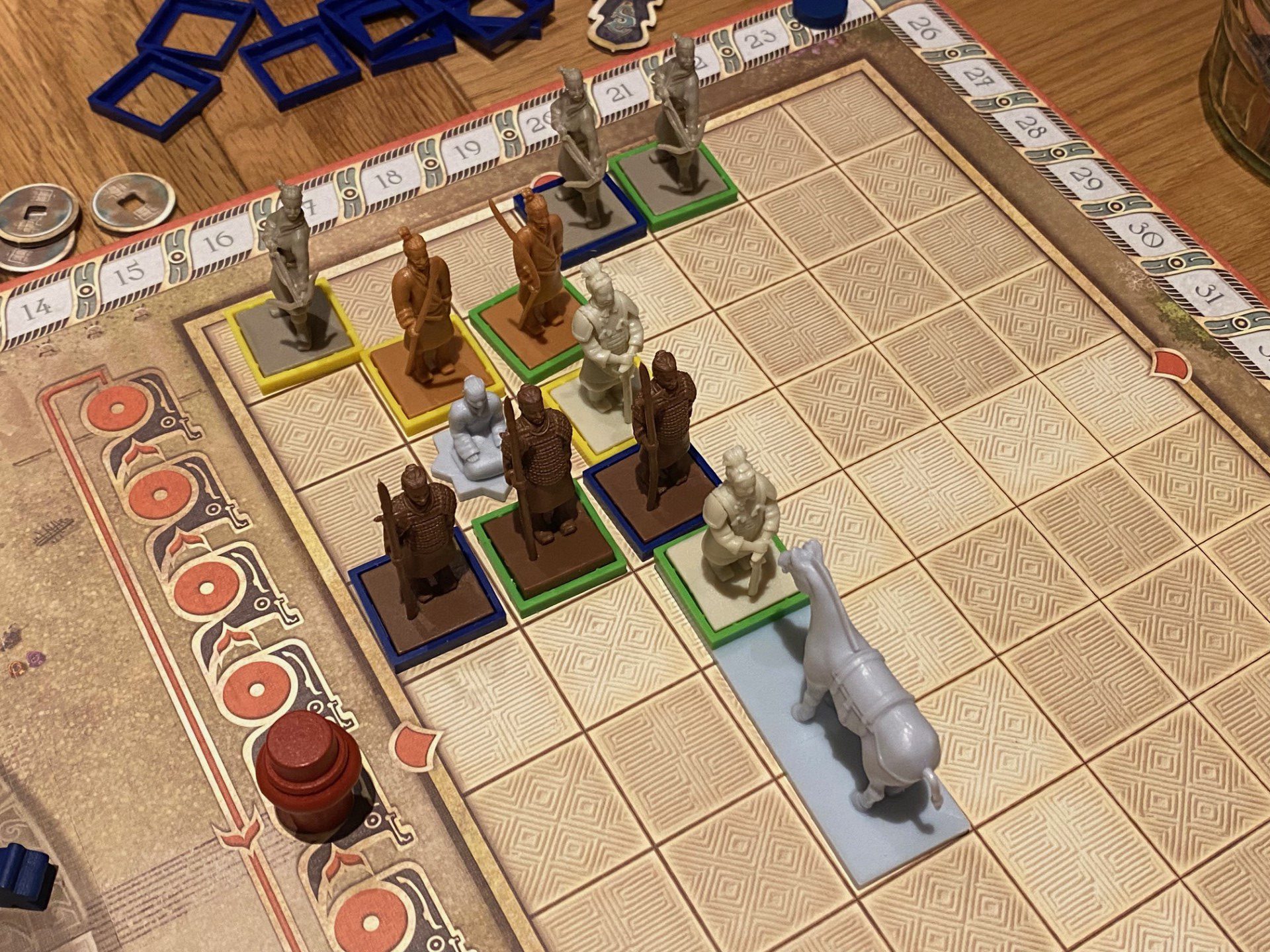
Having said all this, I’ve barely touched the surface of what goes on in Terracotta Army, and there are many clever features here. Take the statue storage box — a simple solution where you simply place the miniatures into the box face down through a cardboard slit. They fit perfectly and contribute to making setup a breeze. Without explaining them all, I also love the way that the specialist statues impact the scoring — even though it gets increasingly complex to explain – because you just don’t need to explain it at the start of the game; you can just tell someone when they have the prerequisites needed to build and walk them through the benefits.
Terracotta Army is an attractive, interesting game that is filled with clever systems and tough choices. There’s a sense of momentum throughout as players will always feel that placing statues is worth it – both for immediate points early on, and via the inspection and round scoring as things go on. I am not a big lover of the amount of chaos that multiplayer games create, but I do love the tight, head-to-head experience with two players, and if that’s how you like your games, then Terracotta Army might be one to look at.
Terracotta Army is available now from your friendly local game store.
Love board games? Check out our list of the top board games we’ve reviewed.
Comments are closed.